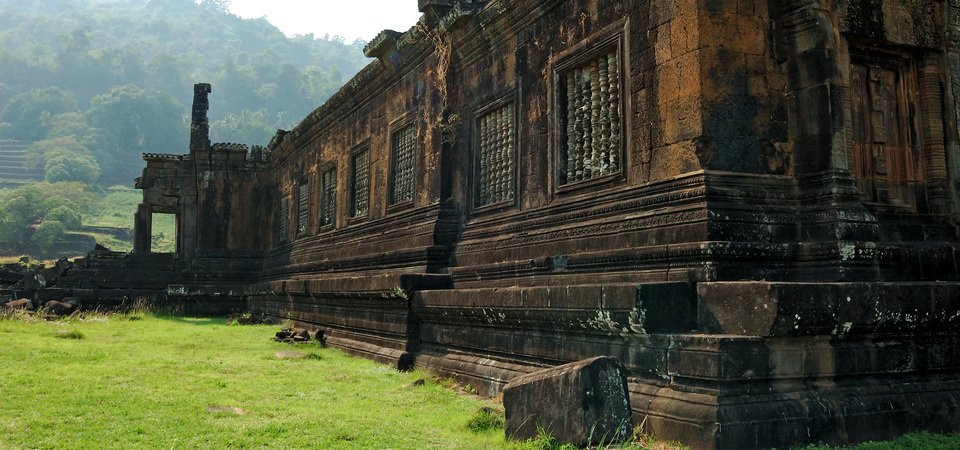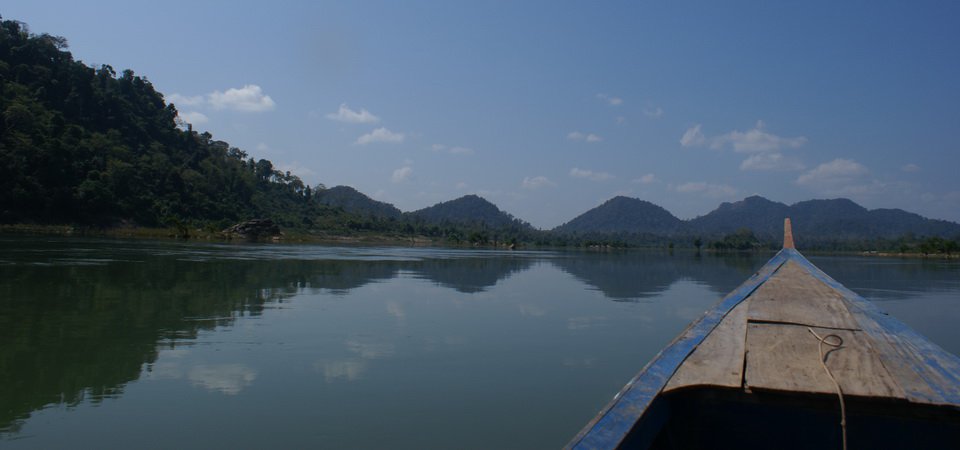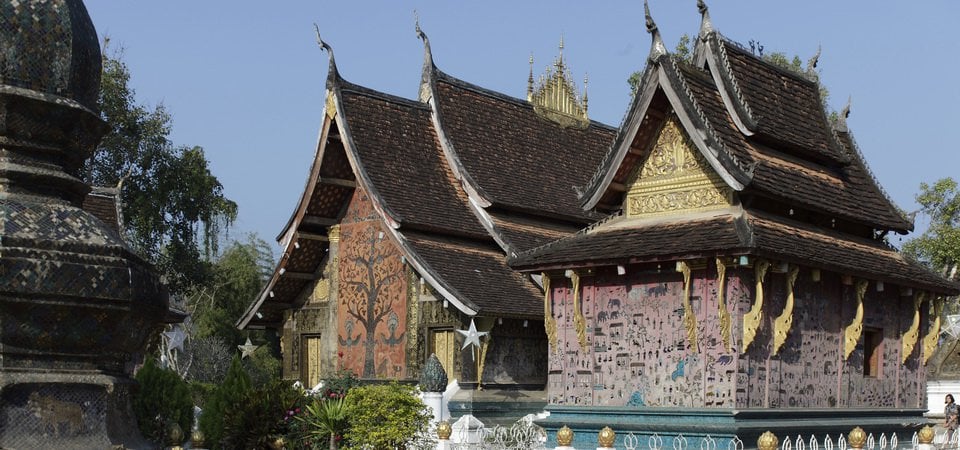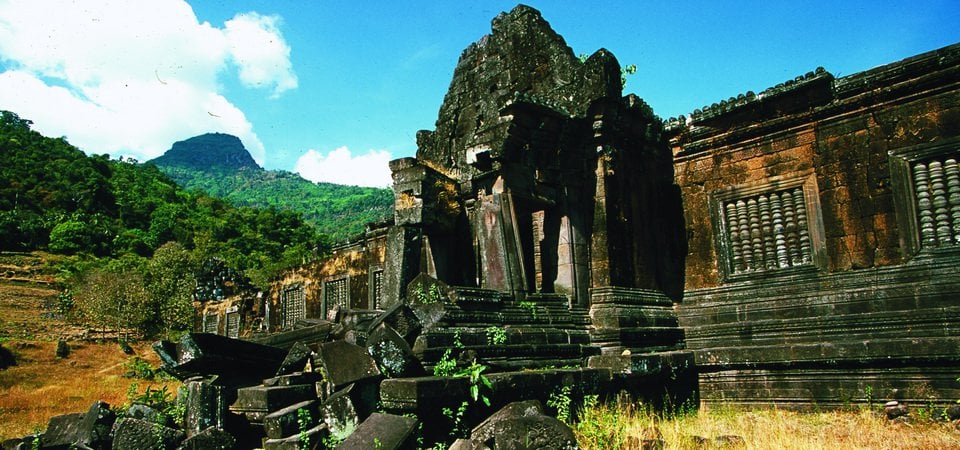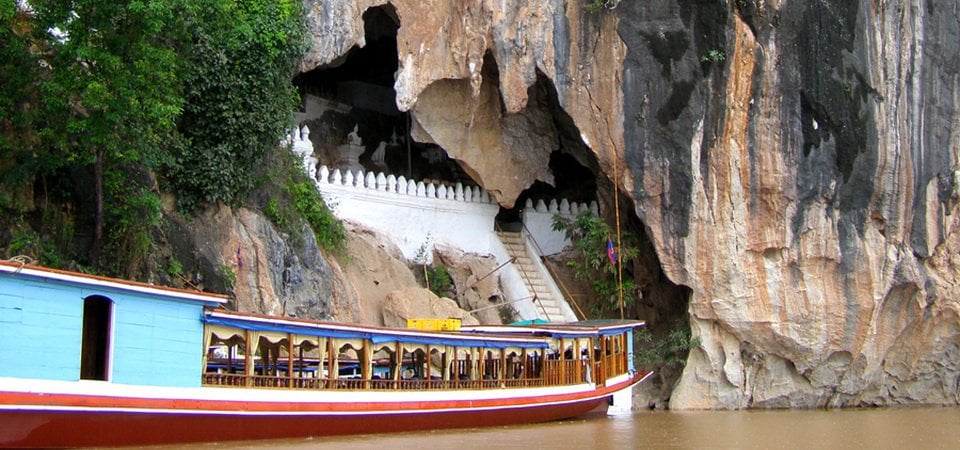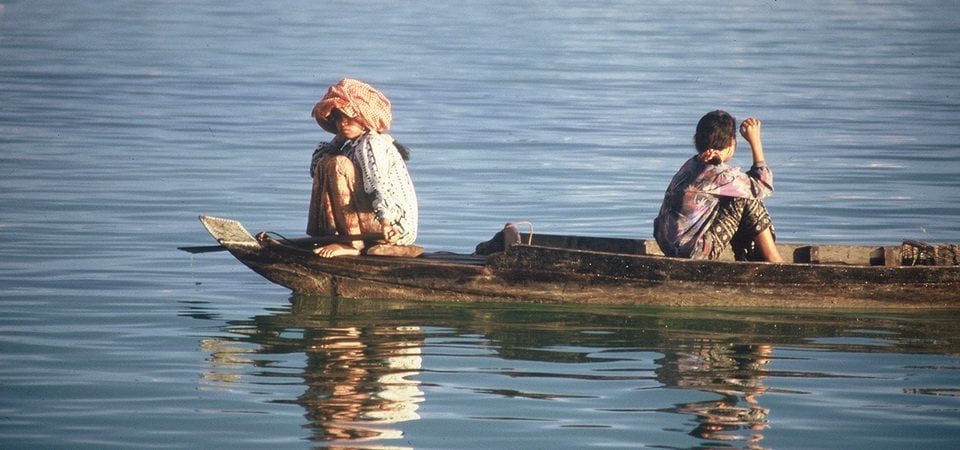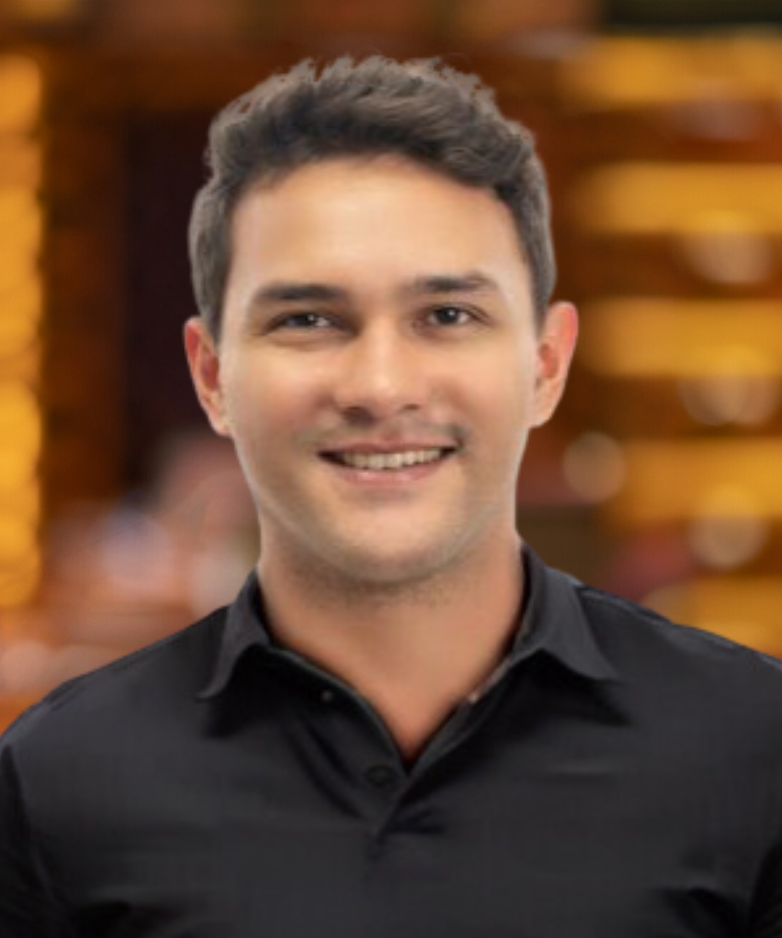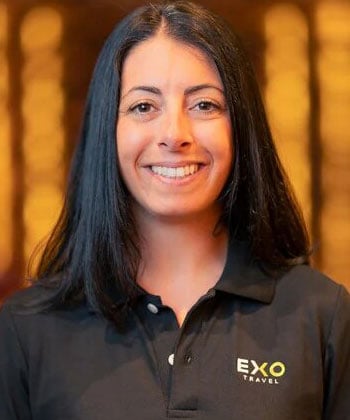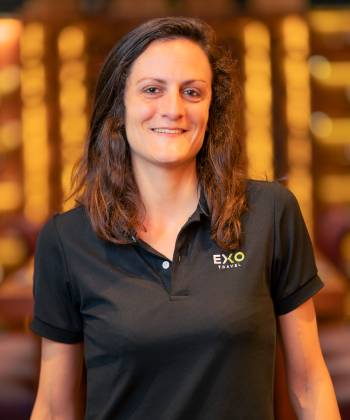See why the Mekong River is known as Asia’s lifeblood with this epic adventure. Trace the mighty River as it meanders through big cities and countryside towns through five countries. From the Myanmar hills to Vietnam’s delta, this tour covers a lot of ground- and water!
Itinerary
📍 Kengtung Airprot - Kengtung city center (4 km): 10 min
Upon arriving at Kengtung Airport the car and guide will be waiting to transfer to the hotel for check in.
After freshening up take a short stroll around downtown Kengtung, a quaint town laid out around Nawng Tung Lake. The city’s architecture ranges from fading old colonial-style houses to nondescript modern structures and several large Buddhist temples and monasteries. It is recommended to visit to Maha Myat Muni Pagoda and Wat Ho Kong, where monks learn Buddhism in khun language, which is similar or almost same as lana from Thailand.
Enjoy dinner in a local restaurant (own account)
Overnight in Kengtung.
Inclusions:
📍 Transfer from Kengtung hotel to Hokyin area: up to 45 mins Walking time: up to 3 hours Trekking up to: approx. 10 km Elevation: +279 m / -800 m Difficulty: Easy
After breakfast, visit Kengtung’s local market. This daily market is visited by villagers from the surrounding area who come to sell their products and barter for goods. Visiting the market, we will see minority hill tribes in their traditional dresses.
Then depart by road to Hokyin area, the starting point of today’s trek. The trek begins with a 1.5-2 hour walk to an Akha village. Spend some time in the village and interacting with the locals to discover more about their unique customs and daily lifestyle.
Resume trekking to Na Phi Phank village, a further 30-45 minutes, which is home to Lahu people who are famous for their blacksmithing. Then loop back to where the car is waiting possibly passing a Wa Village en route. During the trek a picnic lunch will be served in a scenic spot or village.
Return to Kengtung by car this afternoon.
Overnight in Kengtung.
Inclusions:
☕ Breakfast, 🥘 Lunch
📍 Kengtung city center – Tachilek (155 km): 3 hr Mae Sai – Golden Triangle (27.4 km): 33 min Golden Triangle – Chiang Saen (39.1 km): 56 min Chiang Saen – Chiang Rai (90.5 km): 1.41 hr
Wake up early this morning for a colourful and enchanted local market in Kengtung, observing the local people from surroundings hill tribes who buy, sell and trade the various kind of stuffs. It is a unique place to soak in this busy atmosphere and to discover the local life.
It is worth to skip breakfast at hotel and try Shan noodles at the market. There is a section of noodle shops and other local tasty eateries.
Then, embark on a 4-hour drive to the Thai border. Before crossing into Thailand explore the border market and have lunch at a local restaurant (own account).
After completing the border formalities, say farewell to the Burmese guide and meet with Thailand guide.
Upon arrival in Mae Sai, continue driving to the Golden Triangle, where the borders of Thailand, Myanmar and Laos meet. Visit the ancient Kingdom of Chiang Saen on the steep banks of Mekong River, opposite of Laos to see a couple of magnificent ancient ruins and temples. Then embark on a long-tail boat and see the area from the majestic Mekong River’s perspective.
Overnight in Chiang Rai.
Inclusions:
☕ Breakfast
📍 Chiang Rai – Lanjia Lodge (132 km): 1.47 hr
After breakfast at the hotel, transfer to Lanjia Lodge. Arrive at Lanjia Lodge in the afternoon. Be served a welcome herbal drink during check-in. Then, watch a presentation about the Hmong and Lahu tribes, the Golden triangle area and the giant catfish (locally known as Pla Buek) – the world’s biggest freshwater fish found in the Mekong River. Learn about activities that affect the Mekong River and people whose lives depend on the river.
Tour the Hmong and Lahu hill tribe village, including a visit at the shaman’s house of the Hmong. Drink tea with the shaman and discover why the fireplace is important to the Hmongs and why they bury the placenta and umbilical cord of their newborn babies.
Dinner and watch traditional Hmong performances.
Overnight at Lanjia Lodge.
Inclusions:
☕ Breakfast, 🍗 Dinner
📍 Lanjia Lodge – Chiang Khong border (32.4 km): 45 min Houay Xay – Pakbeng by boat (150 km): 6 hrs
After breakfast, transfer to Chiang Khong border to cross to Laos. Be assisted through immigration and cross the road bridge to Lao immigration. This is done by shuttle bus and costs 30 Baht per person (please bring cash).
(Note: Please bring 2 passport photos per person and cash in USD for the Lao visa on arrival.)
Please arrive no later than 08:00 at the border crossing point. Upon arrival at the Lao border of Houay Xay, be greeted by a representative from the Luang Say Cruises and escorted to the shared cruise boat. The cruise takes two days to reach Luang Prabang, with an overnight stop made in Pakbeng.
En route a stop is made to visit and admire the authentic rural life of hill tribe settlements.
Enjoy a delicious buffet lunch onboard the boat and continue the cruise along the scenic Mekong River.
Later in the afternoon, arrive at the town of Pakbeng. Halfway between Houay Xay and Luang Prabang, this small town is lined with wooden houses along a steep street on the hillside and is quite dynamic. Depending on the rivers current, arrive at Pakbeng in time to watch the sunset over the river from the balcony of the room.
Overnight in Pakbeng.
Inclusions:
☕ Breakfast, 🥘 Lunch, 🍗 Dinner
📍 Pakbeng – Luang Prabang by boat (130 km): 5 hr
In the morning enjoy breakfast at the hotel before continuing the river cruise downstream.
OPTIONAL: For early risers, there is an opportunity to visit the morning market of where the nearby villagers and hill tribes come to buy and exchange their goods.
The boat departs at 0830 am for the second half of the journey. On the way to Luang Prabang two stops will be made.
The first stop is at the village of Ban Baw. Here there is a chance to see the processing of traditional rice alcohol. Continue downstream to the Pak Ou Caves. Locally referred to as Tam Ting, these two caves are carved out of towering limestone cliffs and contain thousands of gold lacquered Buddha statues. The Buddhas range in size from a few centimeters to the size of a human. The caves are also a destination for local pilgrimages.
Luang Prabang is a further 2 hours downstream from Pak Ou. Arrive in Luang Prabang early evening, before sunset, and transfer to the hotel.
The rest of the day is free at leisure.
Overnight in Luang Prabang.
Inclusions:
☕ Breakfast, 🥘 Lunch
After breakfast at the hotel, venture to Luang Prabang’s peninsula where the Mekong and Nam Khan Rivers merge. The beautiful Wat Xieng Thong is located here and a visit to the temple unveils golden gates, ornaments, and colorful murals.
Next, visit the former Royal Palace, now the National Museum. The Royal Palace was built in 1904 during the French colonial era for King Sisavang Vong and his family, and is now home to exhibits of art and jewels as well as the residence itself.
From there, continue on foot to visit Wat Mai, with its unique 5 tiered roof and golden bas-reliefs. During Pimai, the Lao New Year, the small Buddha statue called Pra Bang normally housed in the Royal Palace Museum is brought and put on public display in this temple.
Continue to visit Wat Visoun, and see the famous Watermelon Stupa, shaped like the fruit it takes its name from. This temple was destroyed in 1887 by the invading Black Flags from China, and was restored in 1930 by Buddhist monks and local people. Then, visit Wat Aham and observe the altar of the 2 geniuses of Luang Prabang.
This afternoon we continue to visit the weaving village of Ban Phanom. This village, populated by Thai Lue (a tribe with its origins in Southern China), is well known for cotton and silk hand-weaving. Here we have the opportunity to check out how to make the traditional Lao Cotton on a weaving loom, before return to Luang Prabang.
Finish the tour by climbing the 328 steps to the top of Mount Phousi to enjoy a panoramic view of the city and the surrounding countryside. Stop at the evening hill tribe market before returning to the hotel.
Overnight in Luang Prabang.
Inclusions:
☕ Breakfast
📍 Luang Prabang – Luang Prabang Airport (4 km): 15 min Pakse Airport – Tad Fane (30 km): 45 min Pakse – Champasak (30 km): 1 hour
After breakfast, be met by the guide and private car at the hotel for a transfer to the airport for onward departure flight.
Suggested flight:
Depart Luang Prabang at 10:55 on QV513 (Lao Airlines), landing in Pakse at 12:35.
Be met on arrival in Pakse and transfer directly in to the Bolaven Plateau. This mountainous region is home to dozens of hilltribes, waterfalls and coffee and tea plantations. The first stop will be around 14:00 for lunch in a local restaurant close to Tad Fane (not included). The lunch stop is flexible and can be moved forward to be in Pakse if needed.
Tad Fane is a set of twin 120-metre high waterfalls formed by the merging waters of the Champy and Pak Koot rivers. These impressive falls are situated on the edge of Dong Hua Sao National Protected Area, 38km from Pakse. Note: water level may vary according to the previous rainy season.
Stop to visit a nearby tea and/or a coffee plantation. Laos is known for its famous coffee, the majority of which is grown here on the Bolaven Plateau. Visit one of the plantations learn about the process of planting, harvesting and roasting these delicious beans.
Then, witness simple villages on the drive back to Pakse and might like to stop to meet the locals. From Pakse drive another hour south to Champasak and check in to the hotel in the late afternoon.
Overnight on Dong Daeng Island.
Inclusions:
☕ Breakfast, 🍗 Dinner
📍 Champasak – Wat Phou (8 km): 15 min Champasak – Don Khong (100 km): 1,5 hours
After breakfast, transfer by road to Wat Phou.
Recognized by UNESCO as a World Heritage Site, Wat Phou is a spectacular pre-Angkorian temple that sits amidst the rice fields and waterways of southern Laos. The temple was constructed in three levels: the bottom level is focused on the baray (water reservoir) and promenade, the second level features quadrangular pavilions and galleries of carvings, and the top level is the sanctuary itself. The temple was built by the rulers of the Khmer empire before the construction of Angkor Wat. The temple served as the most important economic and political centre of the region and still is one of the Lao people’s most revered temples.
Drive on to Champassak, through streets lined with French colonial buildings, and enjoy lunch in a local restaurant.
Then, continue on to Khong Island, the biggest island in south Laos and the start of the 4000 Islands Region. Called “Siphandon in Lao language, this area is where the Mekong stretches over 14km wide and has thousands of islands between those the river flows and runs between cascades and rapids.
Overnight in Don Khong Island
Inclusions:
☕ Breakfast, 🥘 Lunch
Board a simple longtail boat for a scenic 1.5 hour cruise through the 4000 Islands to the peaceful islands of Done Det and Done Khone, where plantations and simple villages are almost all there is will find.
The islands played an important role during the French Colonial rule as they linked Laos to Cambodia and Southern Vietnam. To overpass the waterfalls, a railway and bridge were built, the perfect place to take some time and soak-in the view.
We recommend bicycles as the best way to explore the island of Don Khone, or a tuk-tuk if preferred. Visit the impressive Lippi Falls, which is on the west of Don Khone very close to the Cambodian border. Their original name, Tad Somphamit, means ‘trap spirit’ and the locals revere these falls as they believe they act as a trap for bad spirits.
From the southern tip of the island a short boat trip will give one a chance to spot the rare Irrawaddy Dolphin. Please note that sightings are never guaranteed.
Continue to the southernmost part of Laos and the imposing Khone Phapheng waterfalls, close to the Cambodian border.
Overnight in Don Khone Island
Inclusions:
☕ Breakfast
📍 Preah Rumkel - Stung Treng (60 km): 1hr 20 mins
On arrival at Cambodia Border late morning, you will be warmly welcomed to Cambodia by your local English speaking tour guide. First head to Veoun Khao, a small village just behind the border, where you will embark on a scenic boat trip to Preah Rumkel. This is one of the wildest parts of the Mekong, and also one of the most remote. The boat trip (20 mins duration) will take you through the flooded forest and across the river, until you reach the ecotourism village Preah Rumkel.
After lunch in the village, return by boat and onward transfer to Stung Treng (2h duration) (Return by transfer for 2hrs and you will also take a ferry 15mn from Thalaboravath district to Stung Treng), where you will arrive in the late afternoon.
Overnight in Stung Treng.
Inclusions:
🥘 Lunch
📍 Stung Treng - Kratie (79 km): 2.30 hr
Breakfast will be served at a local restaurant near the market in Stung Treng.
This morning, visit Mekong Blue, a local silk weaving centre offering work and an income to disadvantaged young women in this remote area. Tour the workshops and shop for beautiful silk items that carry the ‘UNESCO Seal of Excellence.’ (Note: Mekong Blue is closed Sundays).
From here, transfer south towards Kratie. On the way, stop to visit Wat Sorsor Mouy Roy in the village Sambo. The Vihea of the so-called ‘100 Pillars Pagoda’ is an important historical and cultural building and quite famous for its legend involving a princess and a crocodile. Interestingly, the site is now home to a project oriented to protecting various species of threatened and endangered turtles.
Continue along the banks of the Mekong, a very scenic route with great views. In the village Kampi, the best spot to view the rare Irrawaddy Dolphins along the Mekong. Get on board a local boat and be taken to the preferred places of these interesting creatures. As soon as the first dolphin is spotted, the boat driver will turn the engine off. Then, follow the dolphins silently (duration 1 to 1.5 hours).
Arrive in Kratie (transfer ca. 30 minutes) and enjoy lunch at Le Tonlé Tourism, which trains young locals in the principles of hospitality to ensure a better future in Kratie. Dining here means most delicious Khmer food paired with a very personalized service. The students are as excited to meet their guests as the guests themselves to meet the students.
Take some time at leisure to discover the small town before boarding a private boat to Koh Trong Island, only a short 10 minutes boat ride away from Kratie. This Mekong island reflects a typical Cambodian village life, where people’s livelihood largely depend on rice farming and fruit cultivation (Koh Trong is famous for its pomelo, which is similar to grapefruit). Upon arrival, check in to the hotel and enjoy some time at leisure to enjoy the environment.
Dinner at Rajabori Villas.
Overnight on Koh Trong Island.
Inclusions:
☕ Breakfast, 🥘 Lunch, 🍗 Dinner
📍 Kratie – Kampong Cham (81 Km): 1.30 hr Kampong Cham – Phnom Penh (124 km): 2.40 hr
Breakfast at the hotel. Now get ready for a visit to the island that is will be home during the visit to Kratie. Decide whether to take a local horse cart or pedal around the island on a bicycle.
The first destination is the island’s Wat, where a special activity awaits: A tree planting project initiated by a local farmer, in order to recultivate the once densely forested island. Contribute to the project by planting a tree that will carry the name and leave a positive impact on the island.
Next, relax with a beautiful Khmer lunch at a local restaurant.
Now it is time to leave this beautiful island and continue the journey towards Phnom Penh. Stop in Kampong Cham to stretch ones legs on a short tour of the provincial capital and its typical market. Continue the final 120km to Phnom Penh, arriving in the late afternoon.
Phnom Penh was once considered as one of the most beautiful cities in the Orient, and despite its turbulent history and recent development, it still retains a colonial charm. Cambodia’s capital is a bustling city, majestically located at the confluence of the mighty rivers of the Mekong and Tonlé Sap. Wide tree-lined boulevards and many colonial-era buildings reflect the glorious days and add to the allure of the city, where Asian and Western traditions meet in a fascinating way.
Overnight in Phnom Penh.
Inclusions:
☕ Breakfast, 🥘 Lunch
This morning, be greeted by a driver and taken on a tour to the most remarkable sights of Phnom Penh via cyclo, an original Phnom Penh means of transportation and a fun way to explore this lively city. First, visit Wat Phnom, which is situated near the northern boundary of the city. The site contains some good examples of Khmer architecture and statues.
Continue along the lively riverfront to the Royal Palace. This palace dates back to 1866 and houses the Silver Pagoda, named for the over 5000 heavy silver tiles that cover its floors. Its original name is Wat Prakeo, meaning Temple of the Emerald Buddha. In this temple view a collection of Buddhas in gold, silver, crystal, and bronze.
The next stop is the National Museum, built in traditional Khmer style. It houses the world's foremost collection of ancient Khmer artistic, archaeological, and religious artifacts from the 4th to the 13th centuries. Over 5,000 pieces are on display, constituting the repository of the Kingdom's cultural wealth. In addition, the roof space is home to a large bat colony!
Lunch will be at Friends Restaurant.
This afternoon, visit to the remarkable Tuol Sleng Genocide Museum, housed in the former school that was taken over by the Khmer Rouge and used as its main detention and torture center named ‘S-21’. A grim, but important visit that digs below the surface for a better understanding of Cambodia. (Note: All visitors to Toul Sleng Genocide Museum in Phnom Penh are required to wear modest clothing: no short pants or short skirts (knees must be covered) and no sleeveless shirts (shoulders must be covered). See-through clothing will also not be allowed. VIsitors who are inappropriately dressed will not be allowed to visit the museum.)
Late afternoon head to the riverside area of Phnom Penh, a pleasant French style promenade that is great for people viewing. In the early evening (and morning) various activities take place include exercise classes, Khmer dancing and plenty of snacking on local food. Participate in a Khmer dance class which is a lot of fun for all!
Overnight in Phnom Penh.
Inclusions:
☕ Breakfast, 🥘 Lunch
📍 Phnom Penh - Kep (149 km): 2.20 hr
Early morning, leave Phnom Penh in a southernly direction for Kep (4h transfer depend on traffic). Cambodia’s prestigious beach resort of the 1960s is now awakening to its former glory. A fascinating mix of a small calm beach, reminders of the past and a growing choice of activities.
Arrive around lunch time and check into the hotel. Spend the afternoon at leisure and discover Kep independently.
Overnight in Kep.
Inclusions:
☕ Breakfast
📍 Kep – Phnom Den border (149 km): 2.20 hr Ha Tien border – Chau Doc (100 km): 2 hr Chau Doc – Can Tho (150 km): 3.50 hr
Breakfast at the hotel. Visit the popular crab market before transferring to the Vietnam border. The 1h drive leads one through some of the most picturesque scenery in this region. Travel through a sea of rice fields that are bordered with limestone mountains in the distance. Arrive at the border crossing at Phnom Den/Tien Binh and be welcomed by the Vietnamese tour guide to the Mekong Delta.
On arrival at the border transfer to Chau Doc.
In the afternoon head to nearby Sam Mountain. There are dozens of pagodas and temples around Sam Mountain and reaching the peak is the highlight of the visit. The views from the top are spectacular (weather permitting) and there is a chance to look out over to Cambodia.
Arrive in Can Tho after the 3.5 hour transfer from Chau Doc.
Overnight in Can Tho.
Inclusions:
☕ Breakfast
📍 From Can Tho to HCMC (180km):4hours
Wake up early for a boat cruise to the colorful Cai Rang floating market which bustles with wholesalers on big boats. Here, during the early morning market hours, larger sized boats anchor and create lanes that smaller boats weave in and out of. The main items sold here are fruit and vegetables and every boat has a long upright pole at its bow from which samples of the goods for sale are hung. The waterway becomes a maze of hundreds of boats packed with mango, bananas, papaya, pineapple, and even floating pho vendors.
Following the visit to Cai Rang and Can Tho depart for the 4-hour drive to Ho Chi Minh City. Drop off at the hotel (own arrangements) in HCMC.
Inclusions:
☕ Breakfast
You might also like...
Here is a selection of products that may also fit the needs of your client.
Become a partner-
You might also like...
Here is a selection of products that may also fit the needs of your client.
Become a partner -
-
-
-
Get in touch
Our sales team is on hand to ensure that the process of working with us is as smooth as possible. If you should have any questions, feel free to reach out to them.



